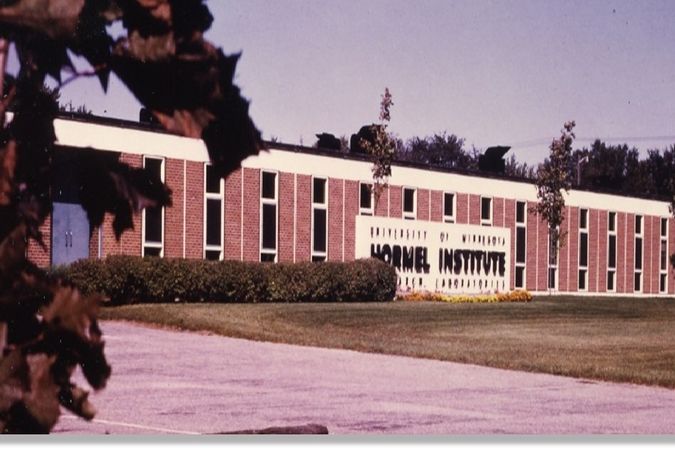
Former Executive Director Harald Schmid chronicled more than six decades of history at The Hormel Institute, from its modest beginnings to research impact worldwide. The Hormel Institute journey that began in the 1940s has become a hub of scientific knowledge generation, with investigators from around the globe, more than eight decades later.
Initially, The Hormel Institute studied food preservation, food safety, swine disease, and other agricultural and food-related research.
In the early 2000s, under the direction of Harald Schmid, The Hormel Institute shifted its focus to researching cancer and other chronic diseases. Today, The Hormel Institute is focused on “Cancer+” — the study of cancer and cancer-related diseases from every angle. Cancer is not a one-size-fits-all disease, and investigators at The Hormel Institute do not take a one-size-fits-all approach to research.
Early Days: 1942-1960
The Hormel Institute owes its existence to the curiosity and foresight of one man – Jay C. Hormel, long-time president and CEO of Geo. A. Hormel & Co. (now Hormel Foods Corp.). Jay Hormel was a visionary who realized that mankind’s progress is largely based on scientific discoveries.
Hence, when he established The Hormel Foundation he resolved that part of the Foundation’s income should be used for scientific research, to be carried out locally.
With that philosophy, the Hormel Institute was established on November 20, 1942, when The Hormel Foundation and the Regents of the University of Minnesota entered into an agreement to operate a biological research laboratory in the small town of Austin, Minnesota.
Development: 1961-2000
Throughout the 1960s and early 1970s, the original Institute buildings on the Hormel estate were used primarily for the Lipids Preparation Project, under the direction of O. S. Privett, and for the miniature pig breeding project.
As the Hormel Institute had grown and developed largely by the initiative and ingenuity of its faculty, organizational weaknesses began to appear, which led to a series of financial problems, beginning around 1970.
After conducting a worldwide search the Board appointed Ralph Holman in 1975 as the new Executive Director for an initial 5-year period. Also, the Board asked Hermann Schlenk to chair an Institute committee charged with the writing of a Hormel Institute Constitution.





